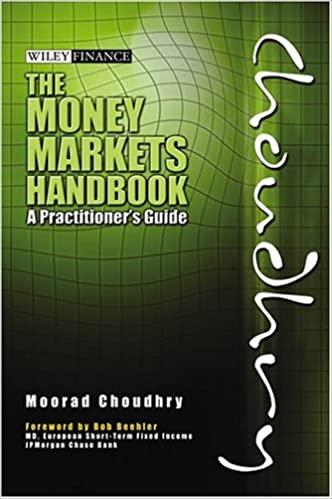Question
An equity-linked CD allows an investor to enjoy the safety of certificate of deposits (CD) while participating equity market. The performance of an equity-linked CD
An equity-linked CD allows an investor to enjoy the safety of certificate of deposits (CD) while participating equity market. The performance of an equity-linked CD depends on the performance of the equity index. As the equity market goes up, so does the equity-linked CDs potential return. Conversely, if the value of the equity index falls, the return on the equity-linked CD will fall but the loss is limited. Many issuers of equity-linked CDs guarantee a base return to guard against a zero return. When an investor purchases stocks or mutual funds of stocks, there is nothing preventing a complete loss should the stock prices plummet. However, most issuers of equity-linked CDs offer principal protection. This means that the initial investment is protected from downturns in the market, but only when the CD is held until maturity. Every investor faces a financial penalty if money is withdrawn from a certificate of deposit before maturity. However, because an indexed CD is tied to the market, early withdrawal becomes even more problematic. Any possible future return can be canceled out by early withdrawal penalties. Most market-linked CDs are protected by the Federal Deposit Insurance Corporation according to current guidelines. However, only the principal amount is insured and not the interest or market return. Chase Manhattan Bank offered the first equity-linked CD in March 1987. In such offering, the bank experimented with FDIC-insured CD that would combine the safety of principal preservation with the growth of market-based returns. One reason to experiment this kind of products is to increase their competitiveness with mutual funds. At the time, traditional banks were prohibited from offering investment mutual funds to customers before the full repeal of the Glass-Steagall Act in 1999. Charles Schwab offers investors an equity-linked Certificate of Deposit, issued by First Union National Bank. This product guarantees to repay the invested amount after 5.5 years, plus 70% of the simple appreciation in the S&P 500 over that time.
(a) Suppose the S&P 500 index is 1400 at the time you invest $200,000 in the equity-linked CD. Show that the equity-linked CD is equivalent to a combination of a zero-coupon bond and certain number of call options on the S&P 500 index. What is the face value of the bond? What is the number of the options?
(b) Suppose the 5.5-year interest rate is 5%, the volatility of the index is 25%, and the dividend yield is 2%. What is the value of the equity-linked CD that you invest?
(c) What is the implicit commission you pay to the bank as a percent of your total investment in the equity-linked CD?
(d) Describe in detail how the First Union National Bank should hedge the exposure to the risk, assuming it is possible to buy long-term index options from a broker-dealer.
(e) If the broker-dealer charges a fee, which is 3% of the fair value (i.e., Black-Scholes value) of the options, how much commission (as a percent of your total investment) the bank can realize after hedging
Step by Step Solution
There are 3 Steps involved in it
Step: 1

Get Instant Access to Expert-Tailored Solutions
See step-by-step solutions with expert insights and AI powered tools for academic success
Step: 2

Step: 3

Ace Your Homework with AI
Get the answers you need in no time with our AI-driven, step-by-step assistance
Get Started


